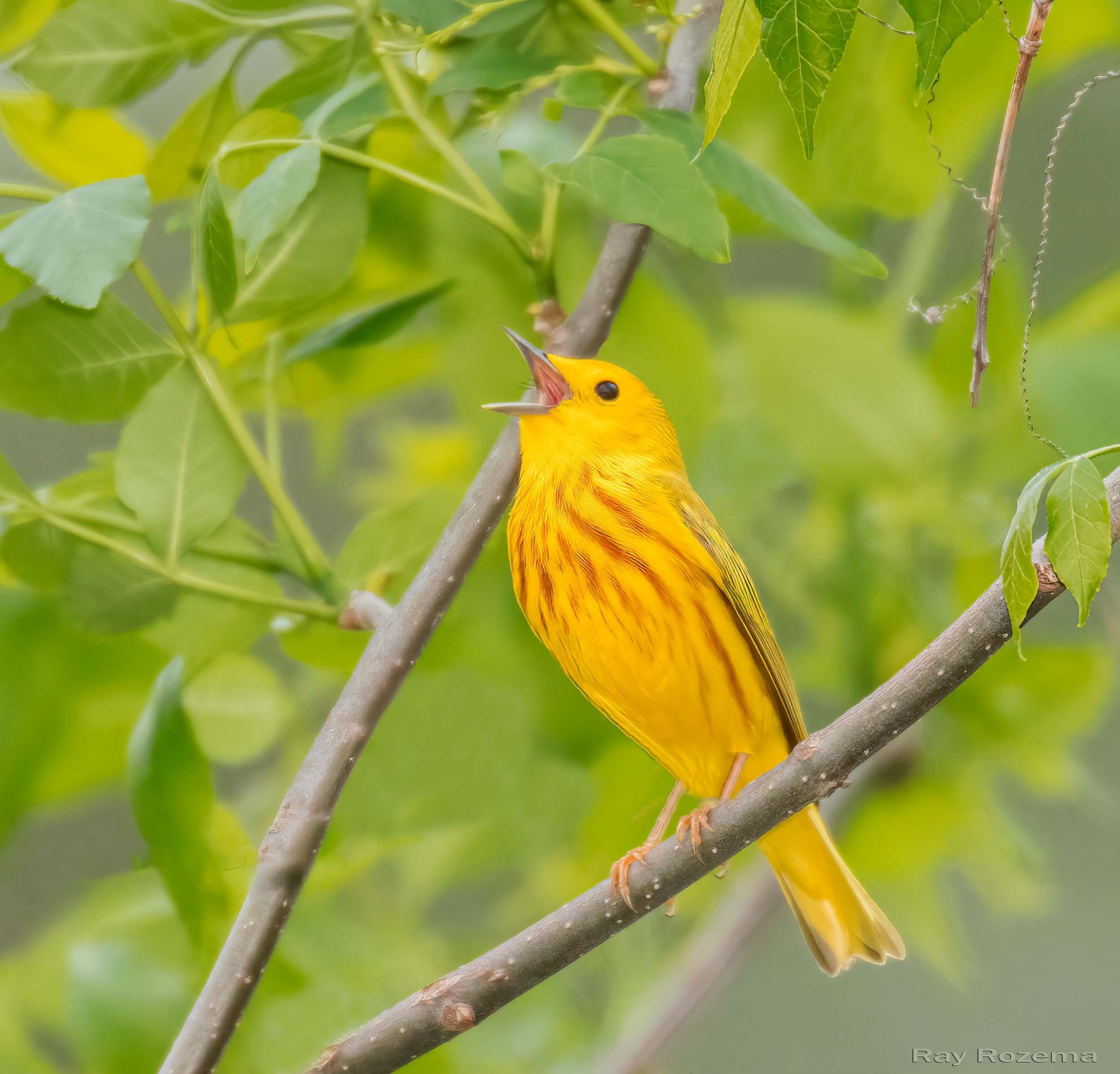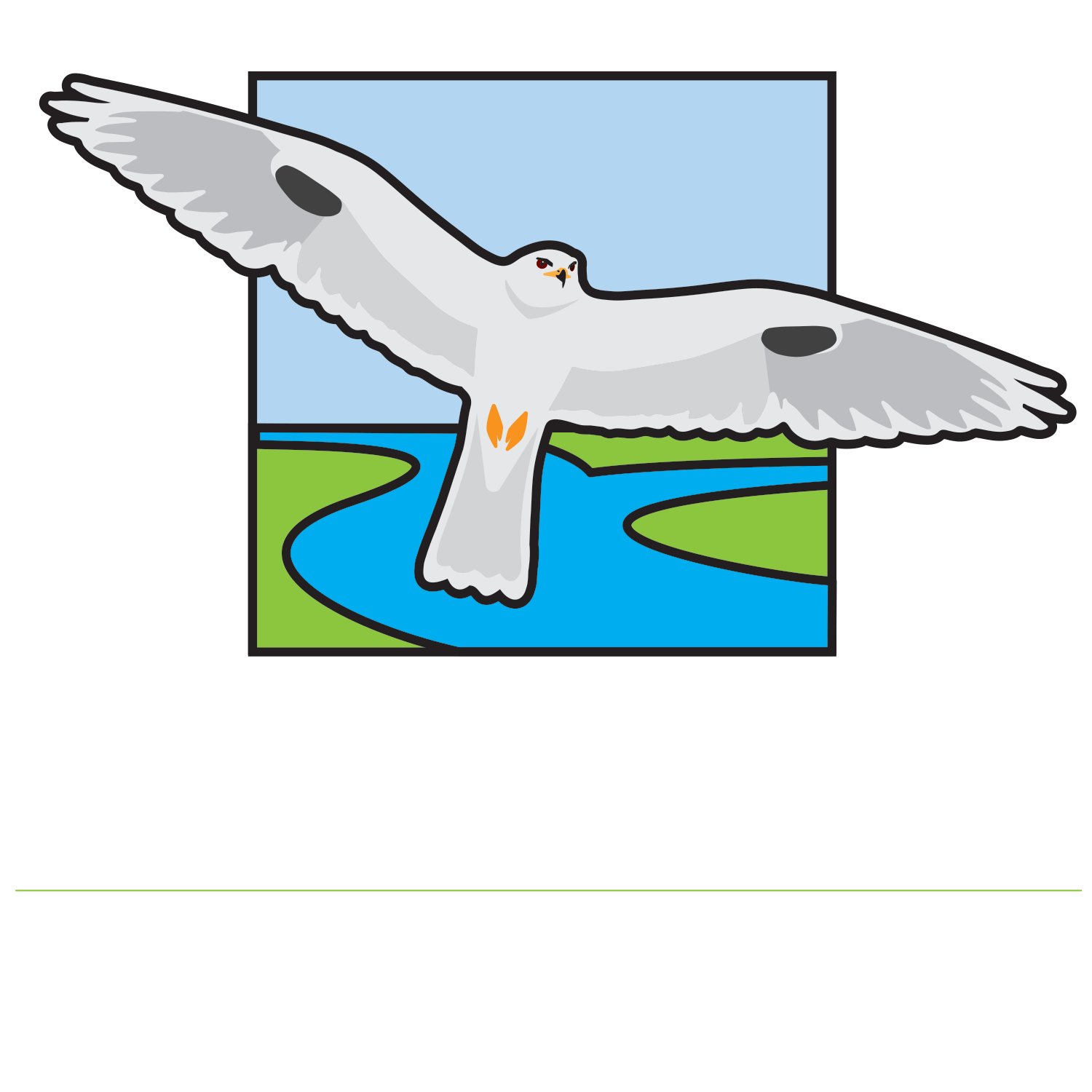Yellow Warbler, adult male, Image by Ray Rozema
This month, let’s learn about one of the many beautiful warbler species called the Yellow Warbler, Setophaga petechia. Yellow Warblers are not known to nest in significant numbers in the Sacramento Valley. However, there have been recent confirmed nests at the Cosumnes River Preserve. Yellow Warblers are one of the first warbler species to start their migrations. Birders in our region eagerly anticipate the arrival of Yellow Warblers in the spring and again in the fall. There are subspecies of the Yellow Warbler that have geographical differences and plumage color variation. This article will focus on the one subspecies that is migratory and is seen in the Sacramento Valley. The other two subspecies are non-migratory and are not present in our region.
What do Yellow Warblers look like?
Yellow Warblers are around 5 inches in length and are rounded in shape. Male adults have brilliant yellow heads and chests. Females are not as brightly colored and can have more green on the upper parts. On adult male birds especially, there can be reddish perpendicular streaking on the chests and abdomens. This streaking may also be present on females but is much less pronounced. Yellow Warblers have yellow-olive green backs, straight and thick bills, fairly short tails that are slightly notched, and dark eyes. Their dark eyes strongly contrast with their plain yellow face. This is something to look for when trying to make an identification. Sometimes a white or light yellow eye ring is noticeable, especially on females and immatures. The wings of Yellow Warblers are yellow-olive green with yellow wing bars and edging. Underneath, there is yellow to the tip of their tails which is a characteristic only seen on Yellow Warblers. This yellow coloration under the tail is present even on drab individuals. Young females in the fall can be very dull. Immature birds vary in color from pale yellow, brownish, or grayish. Hatchlings are helpless and have light gray down (soft feathers of a young bird) and have reddish skin.
Yellow Warbler, adult female, Image by Daniel Lee Brown
Notice the slight eye-ring and drabber color of this female.
Where do Yellow Warblers live?
Yellow Warblers migrate north in the spring to nest. They nest as far north as the Arctic Circle and become a widespread species in North America until they migrate south again. Yellow Warblers are frequently seen near various willow species. They are found in brushy habitat near water that can include field edges, forests, canyons, savannas, stream sides, tundra, and orchards. In the fall, most return to their wintering habitats in southern Mexico, Central America, and South America. There’s also a population of wintering Yellow Warblers that spend the winter in southern California and Arizona. Individual birds are very independent when on their wintering grounds. They “go it alone” when finding shelter, food, and protecting their winter territory.
Female Yellow Warblers build sturdy cup-shaped nests in shrubs or immature trees (or saplings). They use strips of bark, plant fibers, plant down, deer hair, feathers, grasses, and spiderwebs to build nests. The nest height is usually around 10 feet, but is sometimes as high as 40 feet. While the female builds the nest, incubates the eggs, and keeps the hatchlings warm, males guard the nesting territory and brings food to the female. Males perch on tree tops and often sings to notify other birds that this particular nesting territory has been claimed. Males may repeat their song up to ten times per minute and will chase away other warblers, as well as many other kinds of birds. Both parents help to feed the young. The young fledge or leave the nest between 9 and 12 days old. They usually follow one of their parents at this time and remain near their parents for 2-3 more weeks.
There is an interesting fact to share about Yellow Warblers. The Brown-headed Cowbird female hides her eggs in other species nests and subsequently makes other species raise their chicks. They do not make nests of their own and frequently chose warbler or blackbird nests for their egg placement. However, Yellow Warbler females can sense when a foreign egg has been deposited in their nests! Female Yellow Warblers will simply make another nest on top of their previous clutch (or group of eggs). Females ignore clutches that had foreign eggs inside. This process may be repeated again and again when necessary.
What do Yellow Warblers eat?
Yellow Warblers usually forage (or search for food) on twigs or the underside of leaves on small branches. They will sometimes catch flying insects in short flight or may hover to reach leaves when they look for food. Their diet consists of caterpillars of various kinds which make up a large part of their diet. In addition, they will eat spiders, moths, beetles, mosquitos, damselflies, leafhoppers and other bugs, and wasps. They will also eat some wild fruit, especially in the wintertime.
Yellow Warbler, Image by Dana J. Miller-Blair
What do Yellow Warblers sound like?
The Yellow Warbler’s song has been described as sounding sweet. It has clear but sometimes variable notes. It is a fast, “bright”, and musical “sweet- sweet- sweet, sweeter than sweet”. Their flight call is described as a high clear trill. Their call is a sweet, rich, or sharp “chip”. The Yellow Warbler’s “seet” alarm call is actually a specific call used to warn about of the presence of a Brown-headed Cowbird! As discussed earlier, Brown-headed Cowbirds are frequent “nest parasites” for both warblers and blackbirds.
These sounds of the Yellow Warbler are from xeno-canto. More Yellow Warbler vocalizations can be found at: https://xeno-canto.org/species/Setophaga-aestiva










This article was compiled by Jane Van Kessel
Sources include Cornell’s All About Birds and Birds of the World, National Audubon Society Field Guide, American Bird Conservancy, The Warbler Guide by Tom Stephenson and Scott Whittle: 2013, 150 Frequently Seen Birds of California’s Great Valley, Sibley Birds West: Field Guide to Birds of Western North America, Second Edition, by David Allen Sibley, National Geographic Field Guide to the Birds of North America, 2017 edition, Kaufman Field Guide to Birds of North America by Kenn Kaufman, Sacramento County Breeding Birds: A Tale of Two Atlases and Three Decades of Change by Edward R. Pandolfino, Lily A. Douglas, Timothy D. Manolis, and Chris Conard, Smithsonian National Zoo and Conservation Biology Institute
